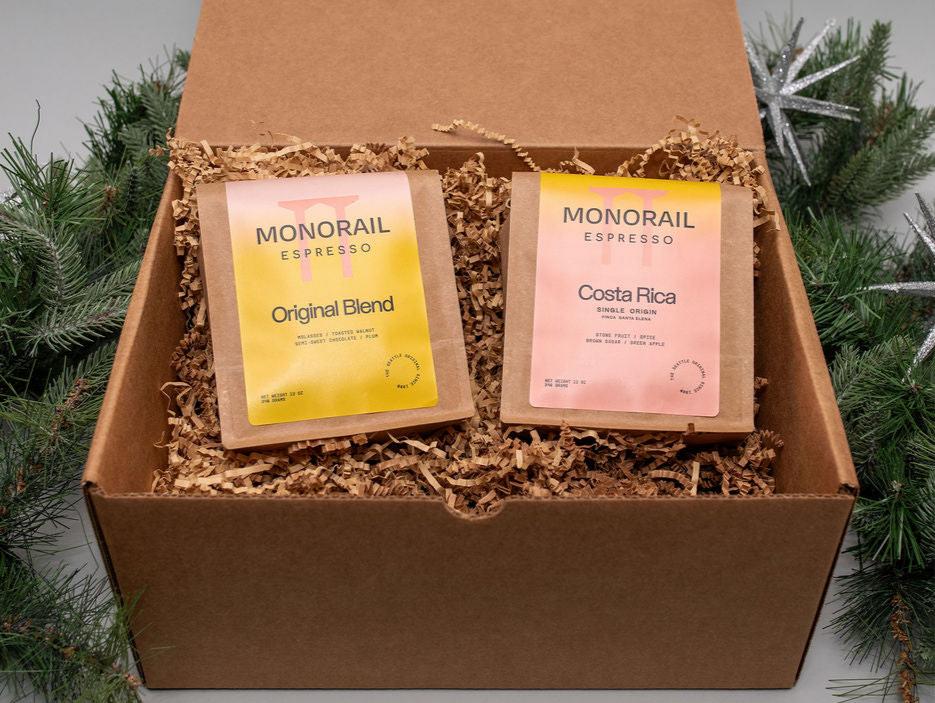Top Cafés Serving SOE Single Origin Espresso Near You
Wiki Article
Coffee Beans 101: Everything You Need to Find Out About Espresso and Blended Coffee Beans
When it comes to coffee, recognizing the nuances of coffee and combined beans can change your everyday mug. From the expanding process to toasting methods, every action plays a role in your coffee experience.Understanding Coffee Beans: Kinds and Varieties
When diving right into the world of coffee, understanding the kinds and ranges of coffee beans is vital for every single lover. You'll mostly come across 2 major types: Arabica and Robusta. Arabica beans are understood for their smooth, intricate tastes and reduced high levels of caffeine content, making them a favorite amongst coffee connoisseurs. On the other hand, Robusta beans pack a punch with a stronger, a lot more bitter preference and greater high levels of caffeine levels, often used in coffee blends.Within these varieties, you'll find different regional ranges, each bringing distinct features. Ethiopian Yirgacheffe supplies bright floral notes, while Colombian beans supply a healthy taste profile. As you check out, bear in mind to pay focus to processing techniques like cleaned or all-natural, as they can significantly affect the last taste. By acquainting on your own with these beans and their tastes, you'll raise your coffee experience and make more enlightened choices in your developing journey.
The Growing Process: From Seed to Bean
When you explore the trip of coffee, everything begins with seed choice methods that set the structure for high quality. From there, cultivation and gathering play essential duties in guaranteeing the beans flourish. Handling approaches change those collected cherries into the coffee beans you enjoy.Seed Choice Methods
Picking the right seeds is vital for creating top quality coffee beans, as it lays the foundation for the entire expanding procedure. Pay attention to the seed's age and storage space problems, as fresh seeds tend to sprout better. Take into consideration the illness resistance of different varieties, as this can considerably impact your yield.Growing and Harvesting
As you support your coffee seeds into thriving plants, comprehending the growing and harvesting procedure is essential for accomplishing the finest flavor and top quality. Begin by growing your seeds in well-draining dirt, ideally in a shaded location to secure them from straight sunlight. As your plants grow, preserve consistent dampness, and be mindful of their requirement for nutrients. Prune routinely to advertise air flow and healthy development.Hand-picking is frequently the ideal method to guarantee just the ripest cherries are selected. Timing is important; collecting as well very early or too late can influence the flavor profile of your beans.

Handling Approaches Described
As soon as you've collected your coffee cherries, the following necessary action is processing them to transform those vibrant fruits into the beans you'll make. There are 2 main approaches: the wet procedure and the dry process. In the dry procedure, you spread the cherries out in the sunlight to completely dry, allowing the fruit to ferment and present distinct tastes to the beans. On the other hand, the damp process involves removing the fruit quickly and fermenting the beans in water, leading to a cleaner taste. After processing, the beans are hulled, sorted, and usually dried out once again. Each approach affects the flavor profile, so explore both can aid you uncover your favored brew. Recognizing these approaches is crucial to enjoying your coffee experience.Toasting Techniques: How Taste Is Established
When it concerns toasting coffee beans, understanding roast degrees is key to disclosing their one-of-a-kind flavors. Each toasting method influences the scent and enhances the taste advancement process, offering you a richer coffee experience. Allow's discover just how these factors integrated to elevate your daily brew.Roast Degrees Clarified
Roast degrees play a crucial function in shaping the taste profile of your coffee. You'll enjoy brilliant acidity and fruity notes when you pick a light roast. As you relocate to a medium roast, you'll notice a balance of sweet taste and complexity, often highlighting delicious chocolate or sugar tastes. Dark roasts, on the other hand, deliver strong, smoky features with much less acidity, making them rich and robust. Each degree arises from various roasting times and temperatures, influencing the beans' chemical make-up. By recognizing these levels, you can better select a coffee that matches your taste choices. Experiment with different roasts to find which one resonates with you, improving your overall coffee experience and pleasure.Effect On Fragrance
The roast level not only affects the preference of your coffee yet also substantially affects its fragrance. When you select a light roast, you'll usually observe intense, flower notes that can make your coffee scent fresh and vivid. As the beans darken, the fragrance shifts; a medium roast highlights much more balanced, caramelized scents, while a dark roast often tends to feature strong, great smoky undertones. Each roasting method launches different unpredictable substances, forming how your coffee scents. Furthermore, the quality of the beans plays an essential function; newly roasted coffee releases more aromatic oils, enhancing that attracting scent. Pay interest to the roast level-- it's crucial to revealing the complete aromatic experience of your brew.Flavor Development Refine
As you check out the taste development process, you'll find that roasting techniques play an important role in forming the preference profile of your coffee. The toasting temperature and time directly affect the level of acidity, sweetness, and anger of the beans. Light roasts retain more of the bean's original tastes, highlighting fruity and flower notes.Coffee vs. Blended Coffee: Trick Differences
Espresso and combined coffee each offer one-of-a-kind experiences that accommodate different tastes and choices. Espresso is a concentrated coffee brewed forcibly hot Single Origin Espresso water with finely-ground coffee beans, leading to a rich, vibrant flavor and a creamy layer of crema on top. It's frequently delighted in as a shot or utilized as a base for beverages like cappuccinos and lattes.On the various other hand, blended coffee integrates various beans from different regions, developing a much more well balanced flavor profile. You'll frequently locate blends that highlight acidity, sweet taste, or body, making them functional for various brewing techniques. While espresso concentrates on intensity, combined coffee might offer a broader variety of flavors that can alter with each sip.
Eventually, your option in between espresso and mixed coffee come down to your individual choice. Whether you hunger for a quick shock or a leisurely cup, both alternatives have something scrumptious to offer.

Developing Methods: Opening the Perfect Cup
When it pertains to brewing coffee, finding the right method can change your experience and raise your cup. Each developing strategy has its unique charm and can substantially influence your coffee's taste and scent. Using a French press allows you to appreciate a robust and abundant mixture, while a pour-over approach supplies a clean, intense mug with unique tastes.If you like coffee, purchasing a high quality equipment can help you grasp the art of drawing shots. For convenience, a single-serve skin system offers speed without sacrificing taste.
Do not forget regarding chilly brew, which delivers a smooth, much less acidic coffee suitable for warm days. Experiment with different techniques to uncover what resonates with your palate. Each developing technique opens a brand-new world of opportunities, so put in the time to explore and locate your best cup. Satisfied brewing!
Sampling Notes: Identifying Flavor Profiles
How can you truly value your coffee if you don't recognize what tastes to seek? Tasting notes are your guide to understanding the intricate world of coffee. Pay attention to the first tastes that hit your palate when you drink. You could discover fruity notes, like berry or citrus, or probably a nutty undertone. As you proceed to taste, discover exactly how the tastes evolve-- this is recognized as the "finish." Some coffees might leave a chocolatey or sugar aftertaste, while others might have a brilliant, tidy surface.Consider the body of the coffee, as well; is it ventilated and light or thick and syrupy? Don't fail to remember level of acidity; a bright level of acidity can include sprightliness, while a reduced level of acidity might offer a smoother experience. By determining these taste profiles, you'll deepen your connection with each cup, making coffee sampling a delightful trip of exploration.

Tips for Selecting and Storage Coffee Beans
Saving and choosing coffee beans properly can substantially enhance your brewing experience. Start by selecting high-grade beans that fit your preference - SOE.When you have your beans, store them in a closed container to avoid direct exposure to light, air, and dampness. A dark, awesome place functions best, so avoid maintaining them in the refrigerator or freezer, as this can introduce dampness. Just grind the quantity you require to keep quality; entire beans retain flavor longer than pre-ground coffee.
Last but not least, attempt to use your beans within 2 to 4 weeks after opening for peak taste. Complying with these ideas will certainly guarantee your coffee stays delightful and savory, boosting your day-to-day brew to brand-new elevations.
Often Asked Concerns
Exactly How Lengthy Do Coffee Beans Stay Fresh After Toasting?
Coffee beans remain fresh for about two weeks after roasting - SOE. You need to save them in an impermeable container, far from light and moisture. Afterwards, their taste and scent start to diminish significantly
Can I Mix Different Coffee Bean Varieties?
Absolutely, you can blend different coffee bean selections! Try out blends can improve tastes and develop a distinct taste account. Just see to it to stabilize the toughness and features of each range for the very best outcomes.What Is the Ideal Work Size for Espresso?
For espresso, you'll want a great grind size, regarding the appearance of common salt. This permits optimal extraction, causing a rich, savory shot. Experiment a bit to locate what fits your preference best!How Does Altitude Affect Coffee Bean Flavor?
Elevation impacts coffee bean flavor by influencing the growth rate and chemical structure. Greater elevations cause slower maturation, which boosts acidity and intricacy, offering your coffee a distinct and dynamic taste you will not fail to remember.Exist Decaffeinated Versions of Espresso Beans?
Yes, there are decaffeinated versions of coffee beans. You can take pleasure in a rich coffee flavor without the caffeine kick. Simply search for "decaf" blends at your regional coffee bar or specialty store.Coffee Beans 101: Everything You Required to Know About Espresso and Blended Coffee Beans.
When diving right into the globe of coffee, comprehending the kinds and varieties of coffee beans is vital for every fanatic.When it comes to toasting coffee beans, comprehending roast levels is crucial to disclosing their one-of-a-kind tastes. Coffee is a focused coffee made by forcing warm water through finely-ground coffee beans, resulting in an abundant, bold taste and a luscious layer of crema on top.On the other hand, mixed coffee combines various beans from different regions, producing an extra well balanced flavor account.
Report this wiki page